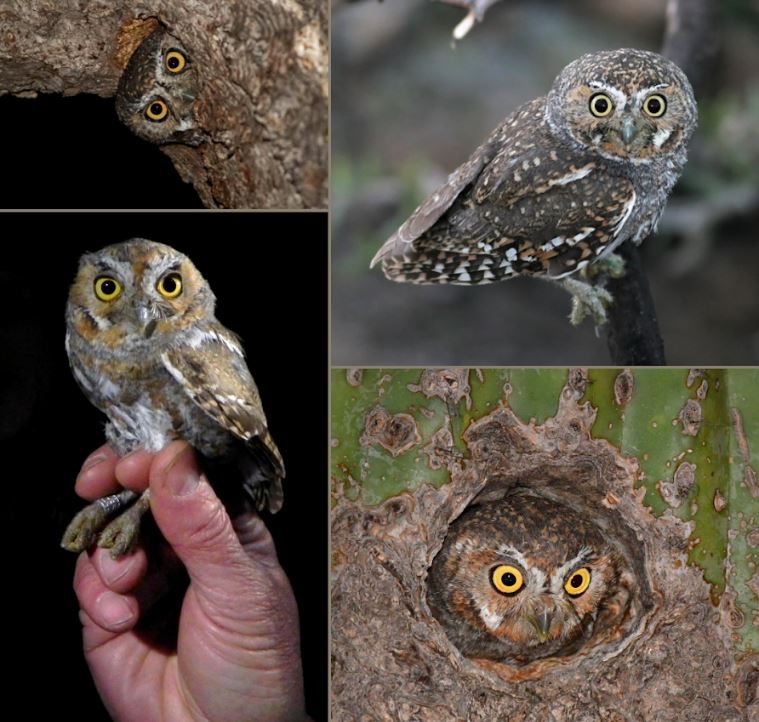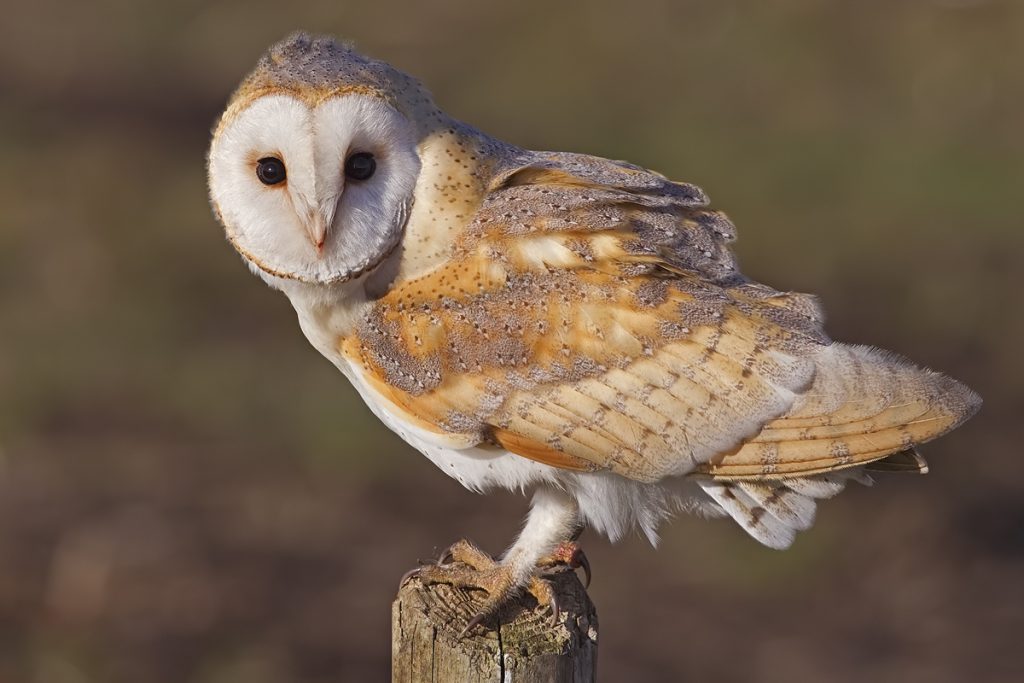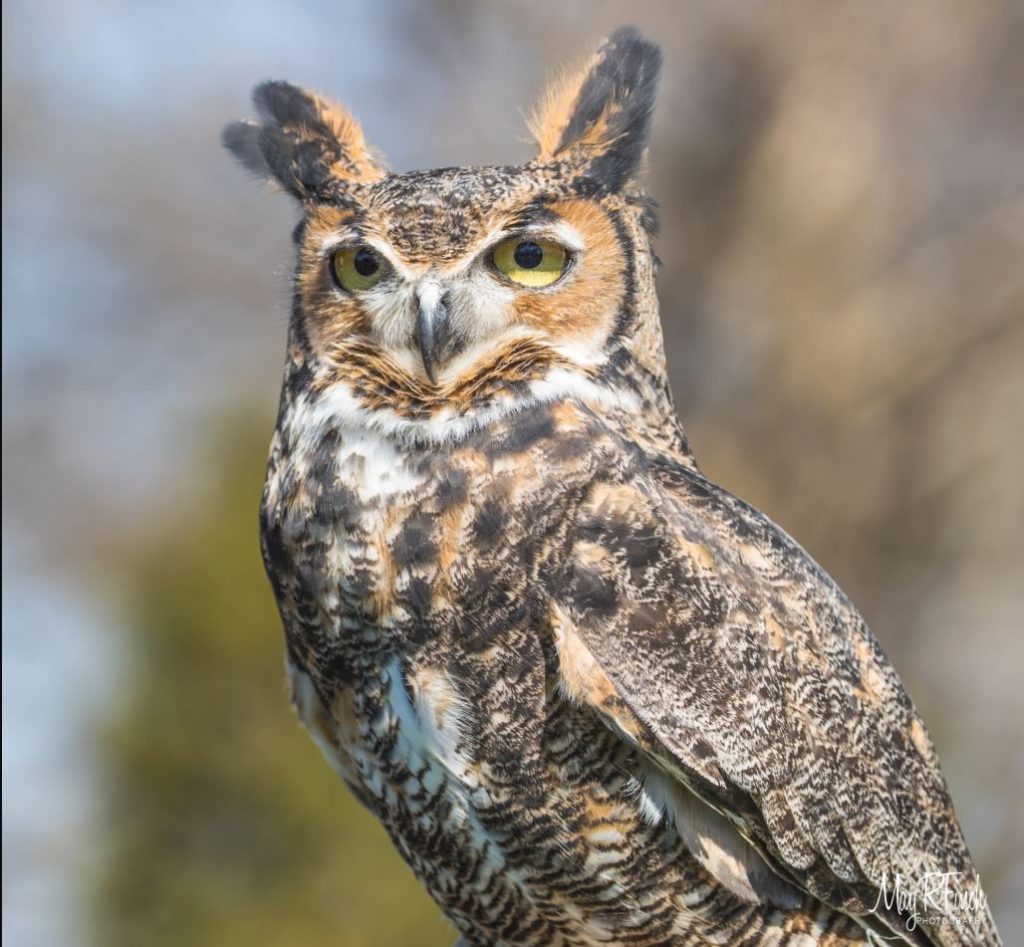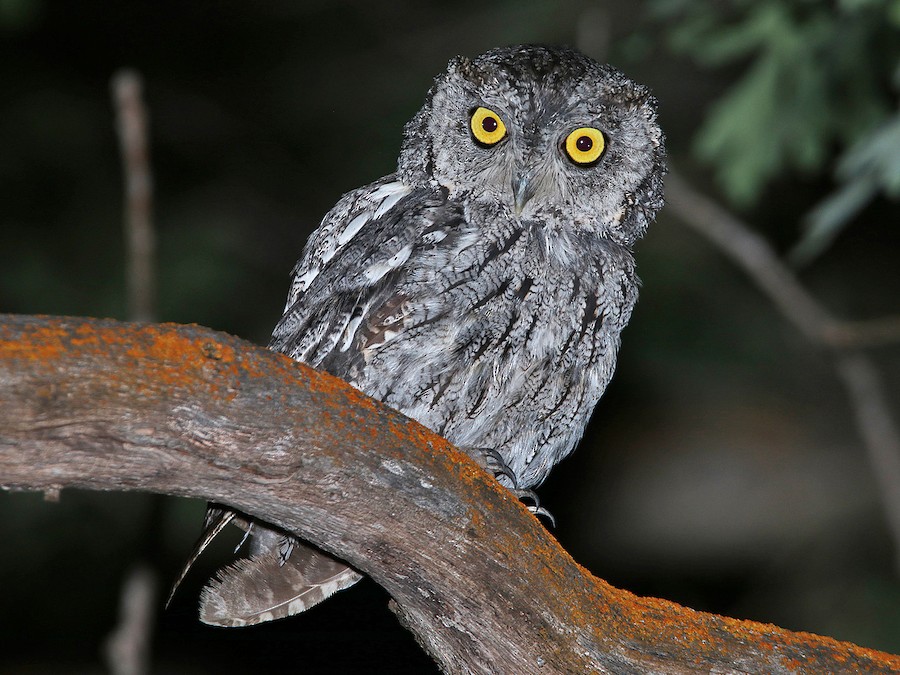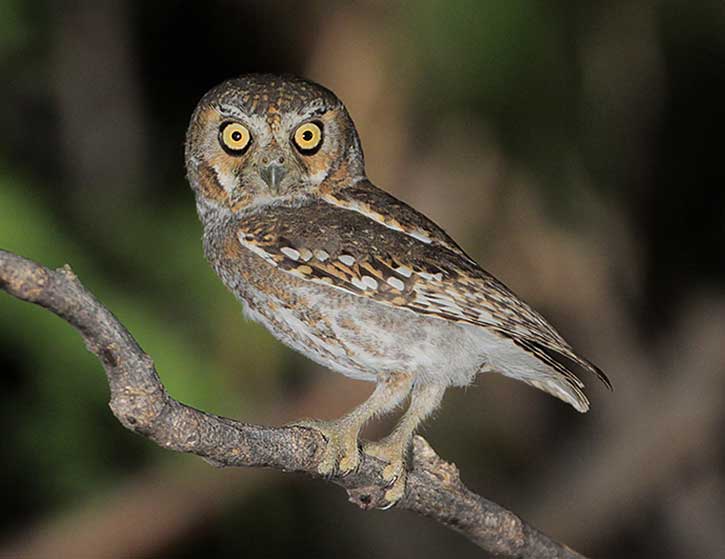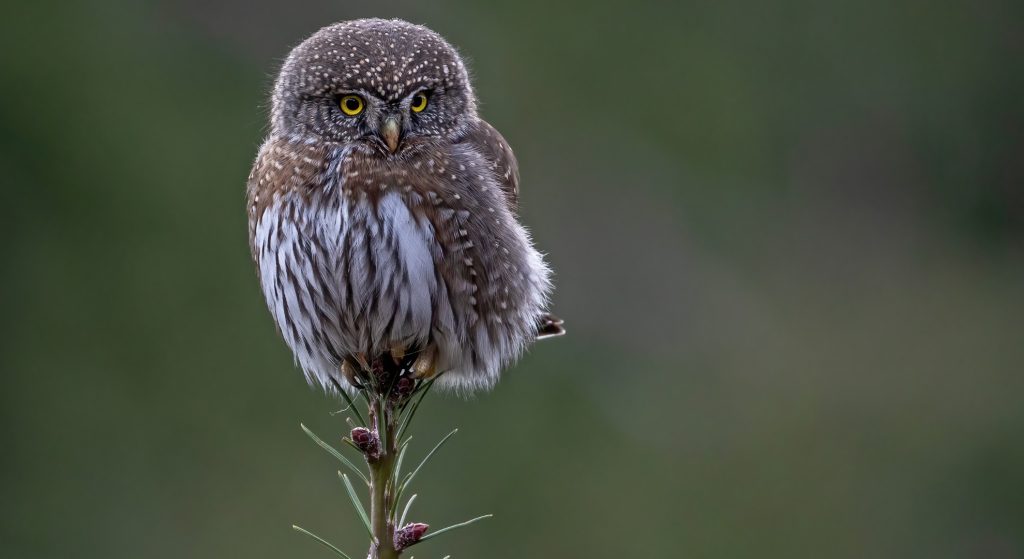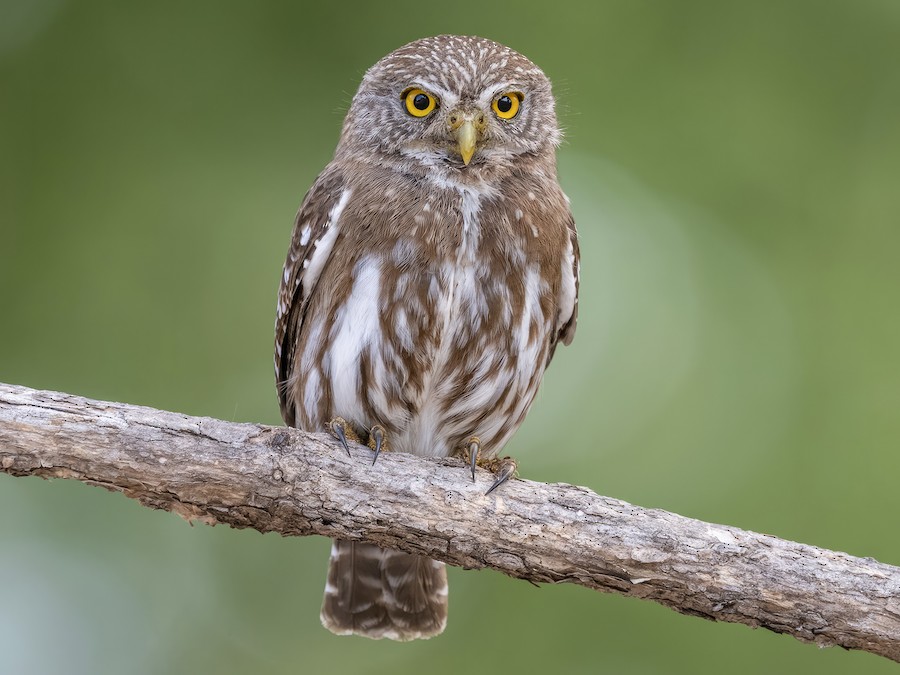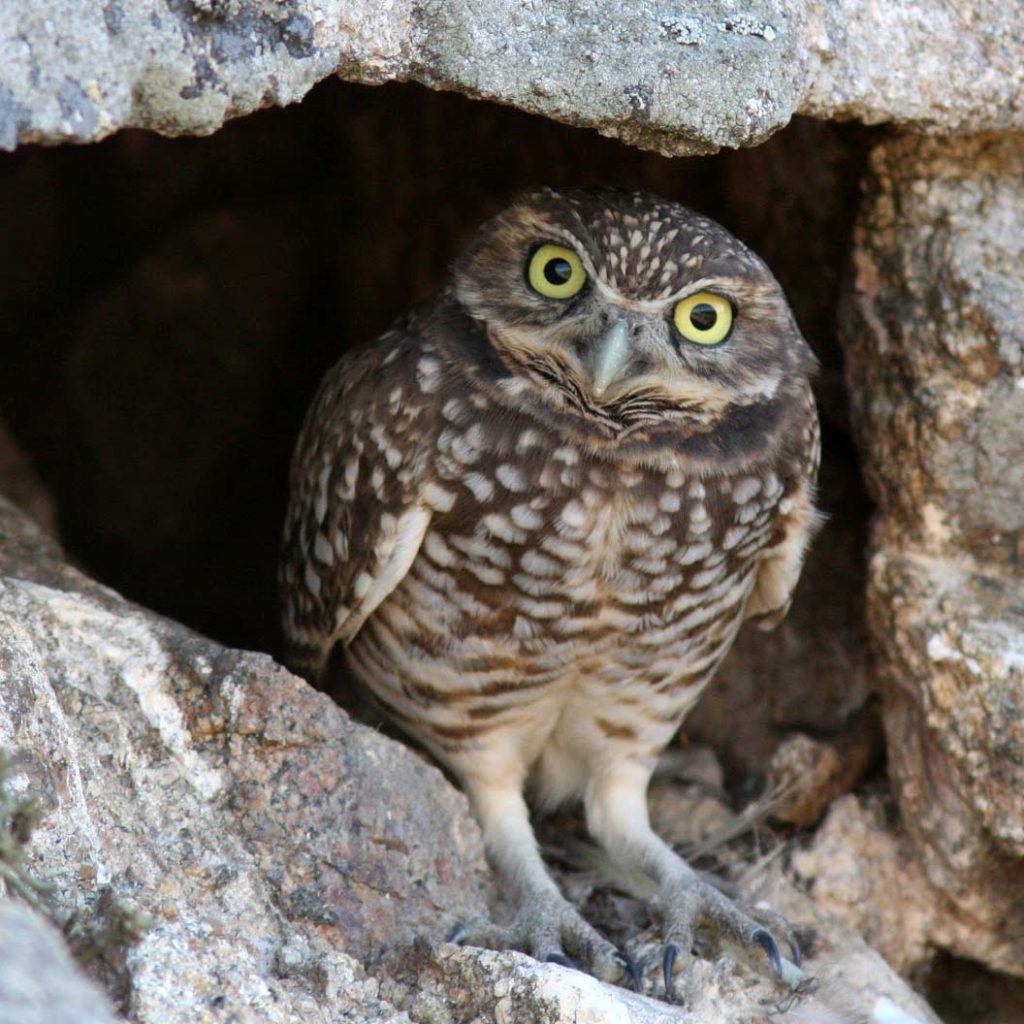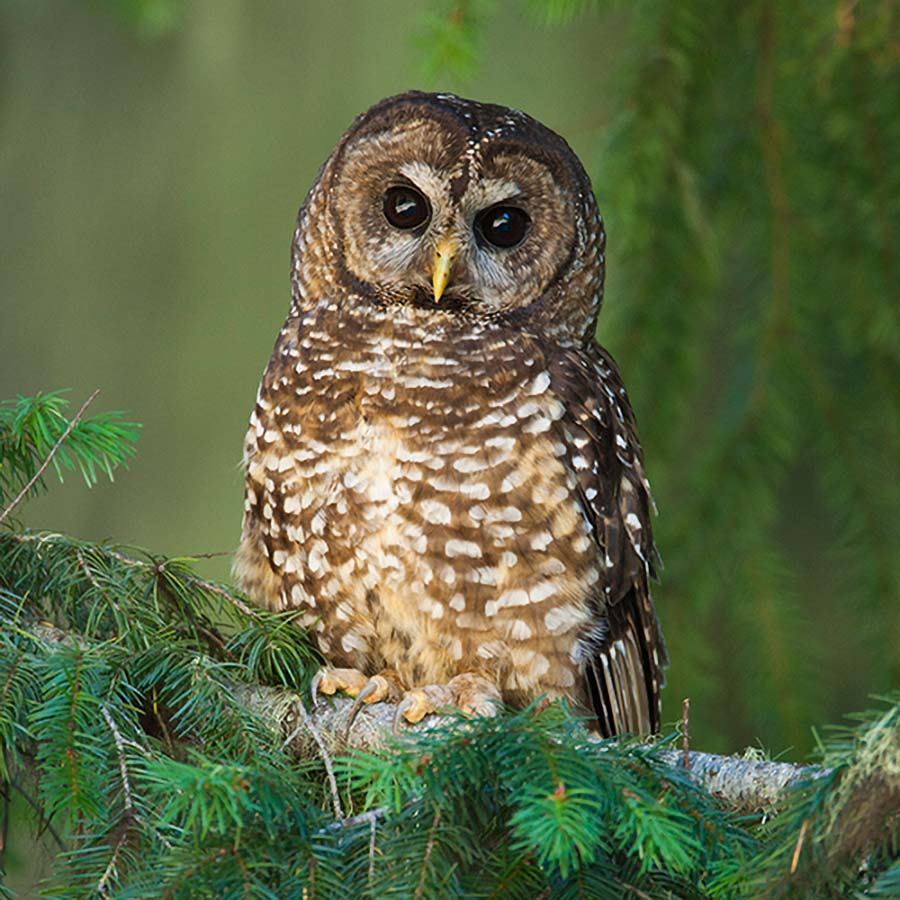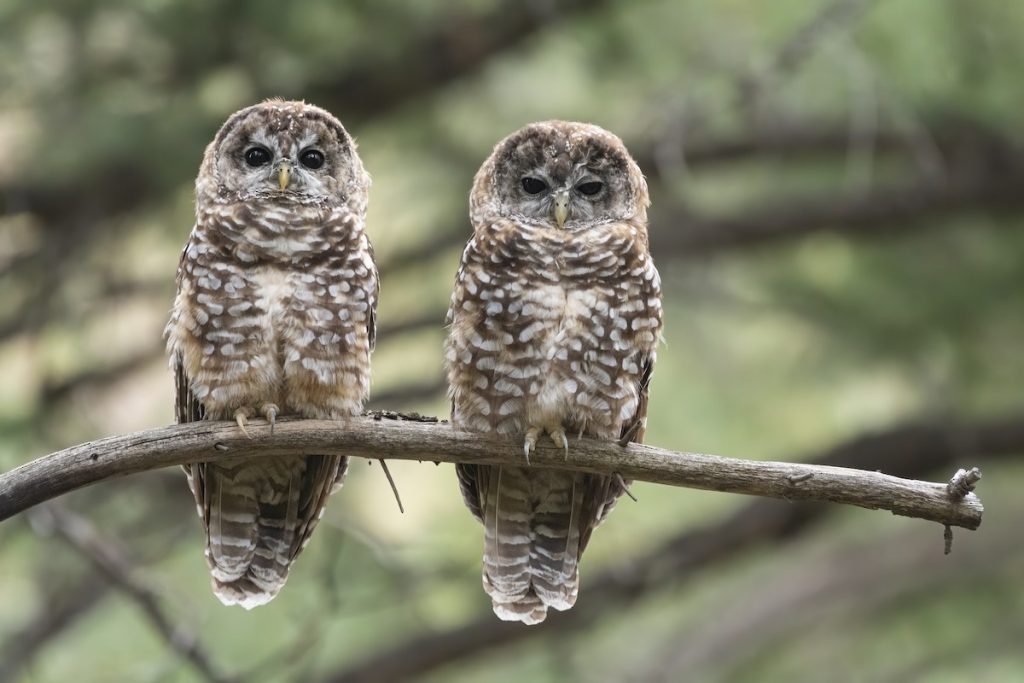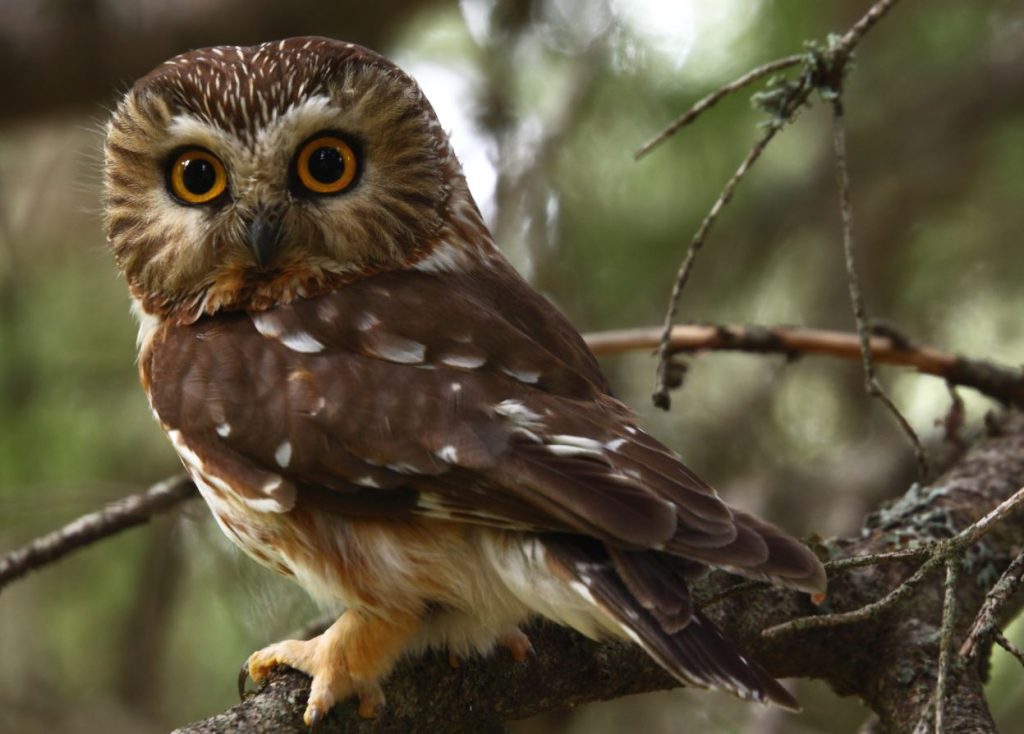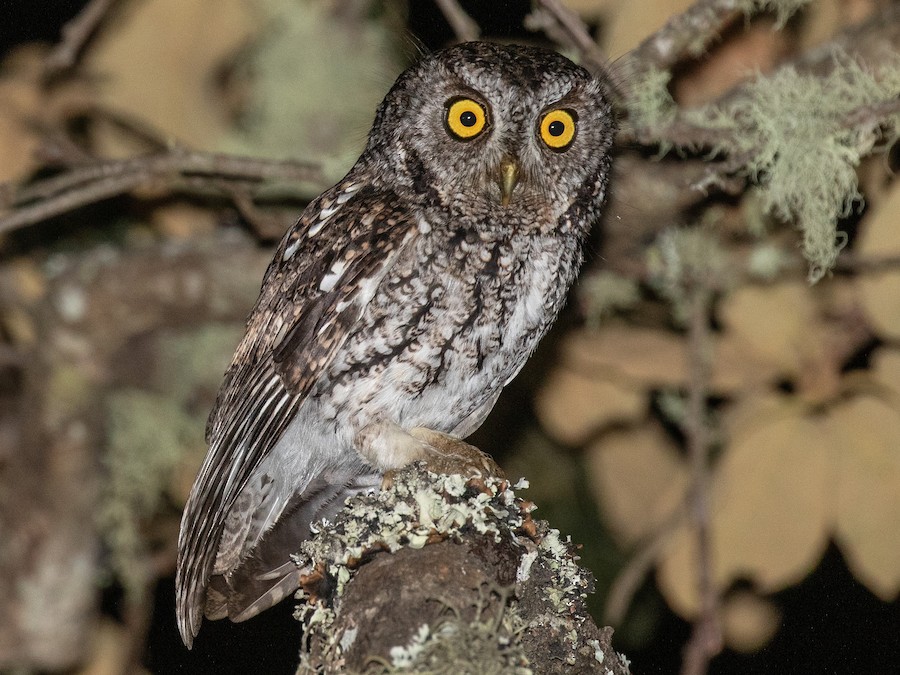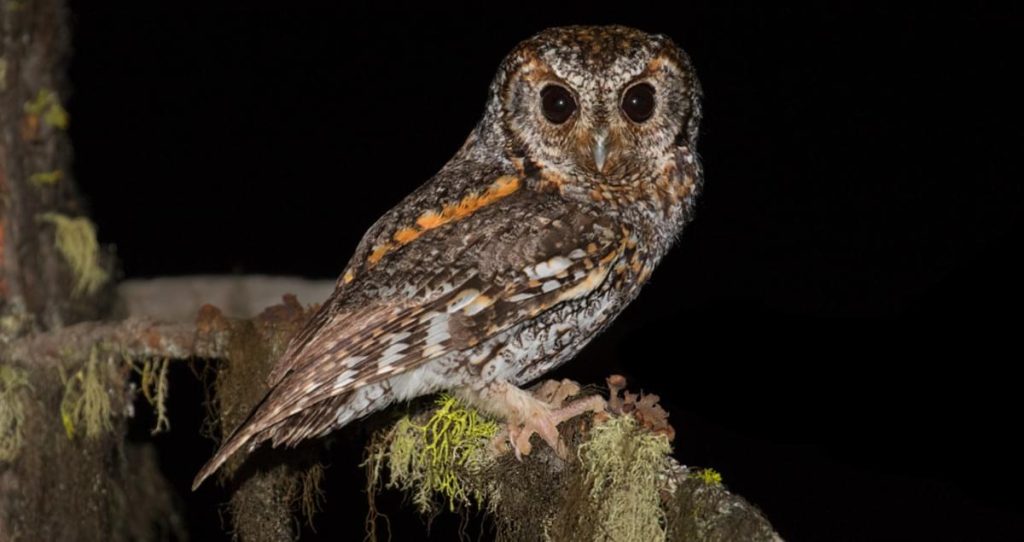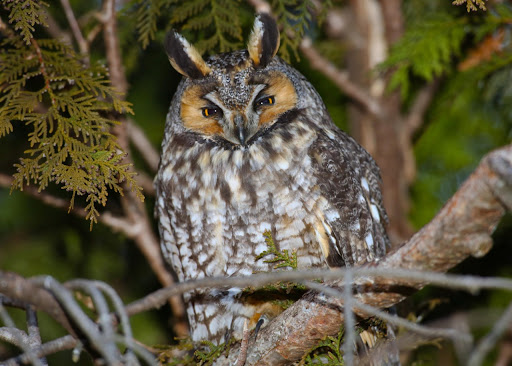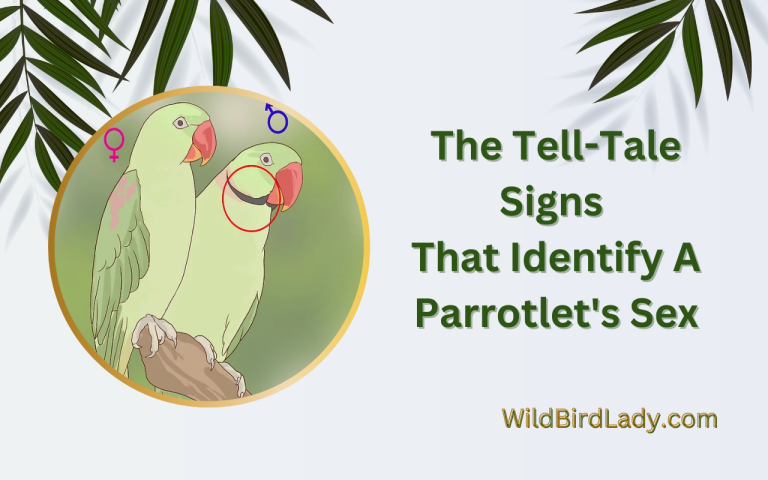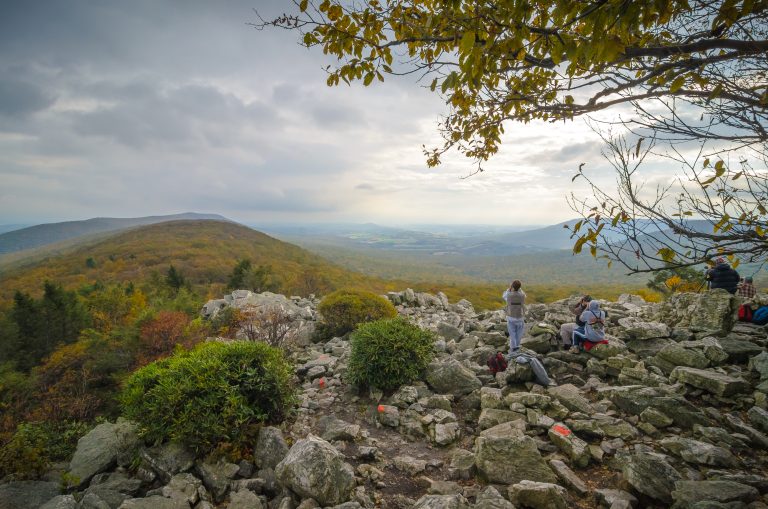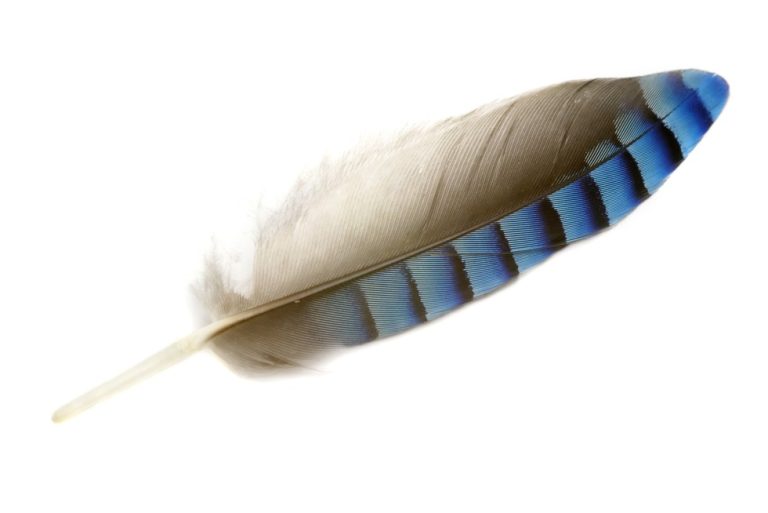The Ultimate Guide to Owls in Arizona: Sounds, Habitats & More
There’s a special kind of stillness in the Arizona desert just after dusk. The last rays of sun fade behind red rock cliffs and saguaro silhouettes stretch long across the sand. Then, from somewhere in the darkness—softly at first—a hoot echoes. It’s a sound as ancient as the Sonoran itself. You pause, ears alert, eyes searching the twilight. An owl.
Arizona is one of the richest states for owl diversity in the U.S., hosting everything from the petite Elf Owl to the powerful Great Horned Owl. With its diverse ecosystems—from pine-covered mountains and riparian canyons to cactus-filled deserts—the state is a year-round haven for these mysterious nocturnal birds.
As a birder who’s spent over a decade wandering through Arizona’s landscapes, I’ve come to learn that each owl has its own rhythm, its own voice, and its own story. In this guide, I’ll help you discover the owls of Arizona through their calls, appearances, habitats, and where to find them in the wild.
Species Spotlight: Owls of Arizona
Here are the most iconic owls you’ll encounter across Arizona. Each entry includes ID tips, vocalizations, diet, habitats, and best times to observe.
1. Barn Owl (Tyto alba)
- Size: 32–40 cm; wingspan: 100–150 cm
- Lifespan: ~2 years in wild; up to 30+ in captivity
- Habitat: Farms, tree cavities, old buildings; nests in barns or cliffs
- Best time watching: March–June, at dusk and into the night
- ID & Diet: With its ghostly heart-shaped face and speckled golden-brown feathers, the barn owl glides silently across farmland. Often nicknamed “demon owl” or “ghost owl” for its eerie screech, it primarily preys on mice and rats, playing a vital role in rodent control.
- Sound: Harsh, drawn-out screech
2. Great Horned Owl (Bubo virginianus)
- Size: 46–59 cm; wingspan: 101–145 cm
- Lifespan: 8–10 yrs wild; 25–35 captive
- Habitat: Forests, deserts, suburbs; nests in old raptor structures
- Best time watching: Year-round; crepuscular hours
- ID & Diet: With imposing ear tufts, yellow eyes, and a powerful frame, this “winged tiger” bowls over prey from bunnies to skunks. Their booming “hoo-HOO-hoo…” reverberates after sunset.
- Sound: Deep “hoo‑HOO‑hoo…” hoots
3. Western Screech-Owl (Megascops kennicottii)
- Size: ~22 cm; wingspan: ~55 cm
- Lifespan: 1–8 yrs wild; up to 19 yrs captive
- Habitat: Wooded canyons, suburban parks; uses tree or cactus cavities
- Best time watching: Spring/fall evenings
- ID & Diet: Stocky and camouflaged in grays or browns, this owl crouches on branches by day. It hunts mice, insects, lizards—even fish.
- Sound: Soft “toot-toot-toot” trill
4. Elf Owl (Micrathene whitneyi)
- Size: 13–15 cm; wingspan: ~23 cm
- Lifespan: 3–6 yrs wild; ~10 yrs captive
- Habitat: Sonoran desert cactus forests
- Best time watching: April–July at dusk
- ID & Diet: The world’s smallest owl, sparrow-sized, pale-faced, flits out at dusk from saguaro cavities to snatch scorpions, beetles—even spiders.
- Sound: High‑pitched “cheew-cheew”
5. Northern Pygmy-Owl (_Glaucidium californicum/_gnoma)
- Size: ~16–18 cm
- Lifespan: Not specified, but pygmy-owls live ~5–10 yrs
- Habitat: Pine-oak montane forests
- Best time watching: Year-round; dawn & dusk
- ID & Diet: Tiny yet bold—bright eyes and tail-bands—and known to dive on songbirds, rodents, insects from daylight perches.
- Sound: Fast series of toots, territorial dawn/dusk
6. Ferruginous Pygmy-Owl (Glaucidium brasilianum)
- Size: ~15 cm
- Lifespan: Not listed
- Habitat: Desert scrub, mesquite, riparian areas
- Best time watching: Diurnal or crepuscular
- ID & Diet: Rufous or gray‑brown stocky owl with false “ears”—despite its small size, it hunts reptiles, insects, even small birds.
- Sound: Whistled “hoo-hoo-hoo…”
7. Burrowing Owl (Athene cunicularia)
- Size: 21–28 cm
- Lifespan: 6–8 yrs wild; up to ~10 yrs
- Habitat: Grasslands, desert flats; lives in underground burrows
- Best time watching: Daytime; early morning & evening
- ID & Diet: Long-legged and ground-dwelling, with bright eyes. Hunts insects, small mammals at burrow entrances—sometimes in daylight.
- Sound: Low barking coo
8. Spotted Owl (Strix occidentalis)
- Size: 41–48 cm; wingspan: 107–114 cm
- Lifespan: ~15 yrs wild
- Habitat: Old-growth pine-oak forests and canyon cliffs
- Best time watching: Dusk to midnight; spring breeding season
- ID & Diet: Medium‑large with dark eyes and white spotting; eats woodrats, voles beneath dense forest canopy.
- Sound: Soft, spaced hoots
9. Mexican Spotted Owl (Strix occidentalis lucida)
- Size: Same as Spotted Owl
- Lifespan: ~15 yrs
- Habitat: Pine-oak canyons; mid-elevation wilderness
- Best time watching: March–June evenings
- ID & Diet: Wearing a mottled chestnut-and-white coat with dark eyes, this subspecies hunts mice, small birds in deep riparian canyons.
- Sound: Low-pitched hoots
10. Northern Saw-whet Owl (Aegolius acadicus)
- Size: ~18 cm
- Lifespan: ~10 yrs typical (source general)
- Habitat: High-elevation conifer forests
- Best time watching: Late winter–spring
- ID & Diet: Small, round-faced with big yellow eyes; preys on mice and shuffles down forests at night.
- Sound: Regular “toot-toot” purrs
11. Whiskered Screech-Owl (Megascops trichopsis)
- Size: ~20 cm
- Lifespan: Similar to Western Screech (~1–8 yrs)
- Habitat: Oak woodlands, riparian corridors
- Best time: Year-round after dark
- ID & Diet: Gray-brown with whisker-like feather tufts, hunts moths, beetles, small rodents at night.
- Sound: Soft whinnies & trills
12. Flammulated Owl (Psiloscops flammeolus)
- Size: ~15 cm
- Lifespan: ~10 yrs typical
- ID & Diet: Tiny brown owl with flame-like streaking—eats moths and insects by catching them midair.
- Habitat: Mature ponderosa pine forests at elevation
- Best time watching: Sept–March evenings
- Sound: Soft low hoot
13. Long-eared Owl (Asio otus)
- Size: 35–40 cm; wingspan: ~90–100 cm
- Lifespan: ~10 yrs wild
- ID & Diet: Distinguished by long ear tufts and mottled plumage; preys on voles and mice in open woodlands.
- Habitat: Shrubby woodlands, riparian strips
- Best time watching: Winter months after dark
- Sound: Repeated “hoo-hoot” group roost calls
Best Places to See Owls in Arizona
Arizona’s diverse terrain offers incredible owl-watching opportunities. Here are top locations for spotting these nocturnal birds:
- Madera Canyon (Santa Rita Mountains)
- Great Horned Owl, Elf Owl, Western Screech-Owl
- Elevation changes offer multiple species in one trip
- Patagonia Lake State Park
- Spotted and Screech-Owls near wooded riparian areas
- Saguaro National Park
- Look for Elf Owls and Burrowing Owls near cacti and washes
- Oak Creek Canyon
- Excellent for Northern Pygmy-Owls and Spotted Owls
- Buenos Aires National Wildlife Refuge
- Great for Burrowing Owl conservation zones
- Catalina State Park (near Tucson)
- Common site for Great Horned and Western Screech-Owls
- Phoenix Mountains Preserve
- Surprisingly rich in urban owls: Screech, Great Horned, even Barn Owls
FAQ: Owls in Arizona
Q1: Are owls active during the day in Arizona?
Most owls are nocturnal, but Burrowing Owls and Northern Pygmy-Owls are often active during daylight.
Q2: When is the best time of year to see owls in Arizona?
Spring and early summer are ideal, especially at dusk. Many species begin nesting in March and are more vocal.
Q3: Can I hear owl calls in suburban areas?
Yes! Great Horned and Screech-Owls commonly call in neighborhoods with mature trees or open spaces.
Q4: What’s the smallest owl in Arizona?
The Elf Owl—only 5–6 inches tall and light enough to perch on a pencil.
Q5: Are there any endangered owl species in Arizona?
The Mexican Spotted Owl is listed as “Threatened” under the Endangered Species Act.
Q6: Is it legal to attract or feed wild owls?
Feeding owls is discouraged. Focus on habitat creation: native trees, avoiding rodenticides, and dark-sky practices.
Conclusion
Whether you’re hiking up a pine-covered trail in the White Mountains or stargazing among saguaros in the Sonoran Desert, the owls of Arizona are always watching—quietly, patiently, with golden eyes full of wild mystery.
These birds are more than just nighttime silhouettes. They’re keystone predators, cultural symbols, and ecological indicators. Listening to their calls or catching a glimpse of one silently swooping overhead is a privilege—and a reminder of the incredible biodiversity tucked within Arizona’s borders.
If you’re just beginning your owl-watching journey, start with a pair of binoculars, a red flashlight, and this guide. The owls are out there. All you have to do is listen.

